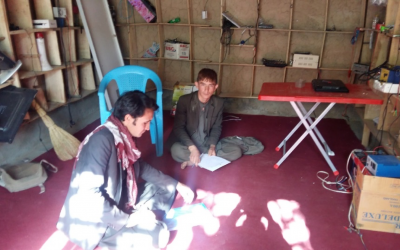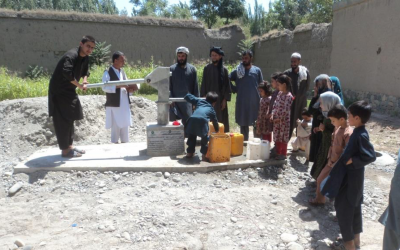Strategic Priorities
1.1 Strategic Objective
Unemployed men, women and youth have secured entrepreneurial opportunities and sustainable employment
To do this we will:
- Assist the unemployed, but women in particular, to establish their own self-help and income-generating groups (CBOs).
- Provide individuals and self-help group members business training and advice for establishing and managing their own enterprises, including value chain development.
- Make vocational skills training available to the unemployed in the community, particularly women and youth, and new businesses.
- Provide job seekers (mainly youth) with training in looking for jobs and making job applications.
- Identify micro-credit institutions and any other sources of business finance relevant to our target groups and link individuals and new businesses to them
- Facilitate linkages between CBOs and new businesses, with the markets and other relevant businesses, associations, and capacity building organisations.
- Lead an advocacy campaign in cooperation with international donors and partners, and other Afghan NGOs for the development and adoption of a national inclusive employment policy for promoting job creation in general, but particularly for women.
1.2 Strategic Objective
Men and women farmers have diversified and increased their income
To do this we will:
- Assist local farmers to organise in groups – farmers cooperatives and livestock associations and provide trainings and practical advice for their organisational development and for all aspects of business management;
- Provide cooperative and association members with technical trainings to introduce standard and up-to-date farming and husbandry practices and standards;
- Provide farmers with inputs such as seed and fertiliser, to increase production and new tools and machinery to modernise techniques and increase mechanisation.
- Rehabilitate irrigation structures to raise production and increase the efficiency of water management;
- Provide cooperatives and associations training in value chain development and facilitate linkages between them and markets.
2.1 Strategic Objective
All those in our target communities who have missed out on formal education have achieved basic literacy and received general education.
To do this we will:
- Provide courses in accelerated learning to children who have missed out on formal education;
- Provide literacy courses to illiterate adults (men and women) in the community
2.2 Strategic Objective
Schools in our target communities are receiving effective support for the delivery of quality education.
To do this we will:
- Promote quality education, particularly for girls, among parents and community leaders in order to raise demand and support for increased and better education
- Where local education governing bodies do not exist, we will work with local authorities to assist community leaders, school administrators, teachers and parents to establish community education committees (CECs) and school management committees (SMCs) to provide community-led governance for local-level education.
- Provide CECs and SMCs training and other assistance to enable them to carry out their duties, such as draw up a school improvement plan, or participate in school management.
- Mobilise teachers and school administrators to voice their demands for adequate school equipment, stationary including text books, a better school environment, and better pay.
- Collaborate with government in providing updated teacher training courses to students and in-service training to teachers
- Provide trainings in school management to school administrators, in collaboration with the Ministry of Education
- Advocate in collaboration with national civil society and key education actors for the full implementation of national education policy, including the National Education Strategic Plan (NESP) 2017-2021, with appropriate budget allocations for primary education in rural communities.
3.1 Strategic Objective
Local peace mechanisms are in place and are actively resolving community conflicts and seeking ways to reintegrate returnees and IDPs
To do this we will:
- Facilitate the establishment of community-based peace shuras
- Provide trainings to shura members on peacebuilding, conflict resolution, human rights, gender, and action plan development;
- Facilitate peace shuras to carry out conflict analyses and to develop community action plans
- Establish linkages between community-based peace shuras and provincial and national peace structures and actors
- In alliance with local and international partners and other peacebuilding NGOs, conduct advocacy for the development of a national
- peacebuilding policy which addresses local conflicts and community peacebuilding.
3.2 Strategic Objective
Marginalised groups are empowered to participate in peacebuilding processes in our target communities
To do this we will:
- Carry out awareness raising campaigns on human rights and gender, targeting youth and women, in particular;
- Facilitate dialogue sessions with community elders on the subject of the right to participation and the inclusion of marginalised groups, including women and youth, in local peace processes;
- Facilitate and support the inclusion of marginalised people in peace shuras
- Provide trainings on peacebuilding and conflict resolution, and functional literacy courses to marginalised groups, both individuals and their organisations.
4.1 Strategic Objective
Most vulnerable and affected people who needed humanitarian assistance have access to food, potable drinking water, sanitation facilities, hygiene awareness, and secured livelihoods for income generation:
To do this we will:
- Provide multipurpose cash (unrestricted) assistance to the affected and most vulnerable women and men for living with dignity and respect;
- Provide short-term employment opportunities (restricted) assistance against cash to the affected and most vulnerable women and men for immediate access to resources;
- Provide livelihood support packages based on existing expertise, skills, and profession to the affected and most vulnerable women and men for income generation;
- Provide sufficient, safe, and accessible water for drinking, cooking, and personal & domestic hygiene to the affected and most vulnerable women, men, girls, and boys via rehabilitation of existing wells and construction of new water sources;
- Provide sanitation facilities (latrines and bathing spaces) to the affected and most vulnerable women, men, girls, and boys via rehabilitation of existing and/or construction of new facilities for protecting privacy and avoiding open defecation;
- Provide hygiene and water kits to the affected and most vulnerable women and men to prevent disease outbreaks, collect and store water for maintaining hygiene;
- Provide training awareness to the affected and most vulnerable women, men, girls, and boys through hygiene promotion for knowing key public health risks, prevent deterioration, and practice good hygiene;
- Provide durable solutions to the affected and most vulnerable women, men, girls, and boys for righteous living and dignity;
- Provide timely and relevant humanitarian assistance to the most vulnerable people via using gender and conflict sensitive approach, and by promoting resilience;
5.1 Strategic Objective
The disaster-prone communities have received trainings on natural and other disaster risk reduction and their capacities are strengthened.
To do this we will:
- Conduct Needs and Risk Assessment in targeted villages.
- Work with existing community structures of DDAs and CDCs, to integrate DRR planning, and promote and organize interventions. Identify projects to integrate social protection/disaster risk reduction mechanisms in programme and departments.
- Develop a contingency plan with targeted communities on the basis of a seasonal calendar of disaster in Afghanistan
- Build capacity of local actors (CDCs and DDAs) so that they have great capacity to manage risk at community level.
- Reduce the vulnerabilities faced by vulnerable and marginalized (people living with disability, children and women groups in Afghanistan) by building their capacity
- Engage DDAs and CDCs for better preparedness and response to natural disaster in effective, efficient and timely manner.
5.2 Strategic Objective
The disaster-prone communities which needed emergency response have achieved immediate relief and emergency response.
To do this we will:
- Ensuring ADA Programmes contribution towards emergency response, such as water purification techniques to provide safe drinking water and basic hygiene facilities.
- Technical survey and construction of small mitigation structures to increase the resilience of communities.
- Increase access to basic services and economic opportunities through the provision of sustainable infrastructure – for those who are vulnerable and disaster affected
- Establishment of saving boxes for the maintenance of constructed small mitigation structures.
- Linking emergency response to long-term development plans to identify sustainable solutions






